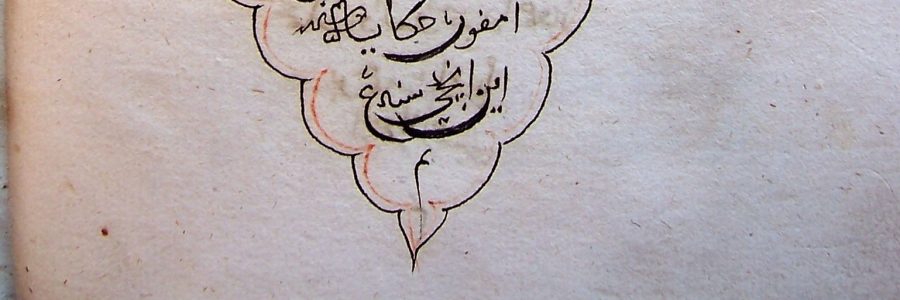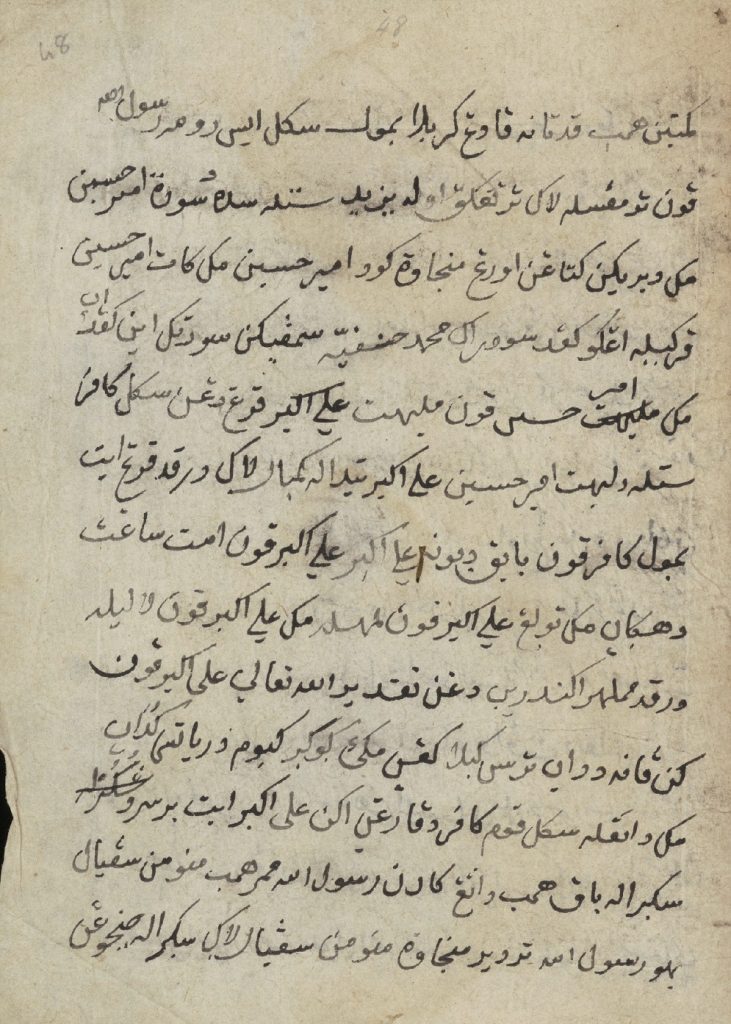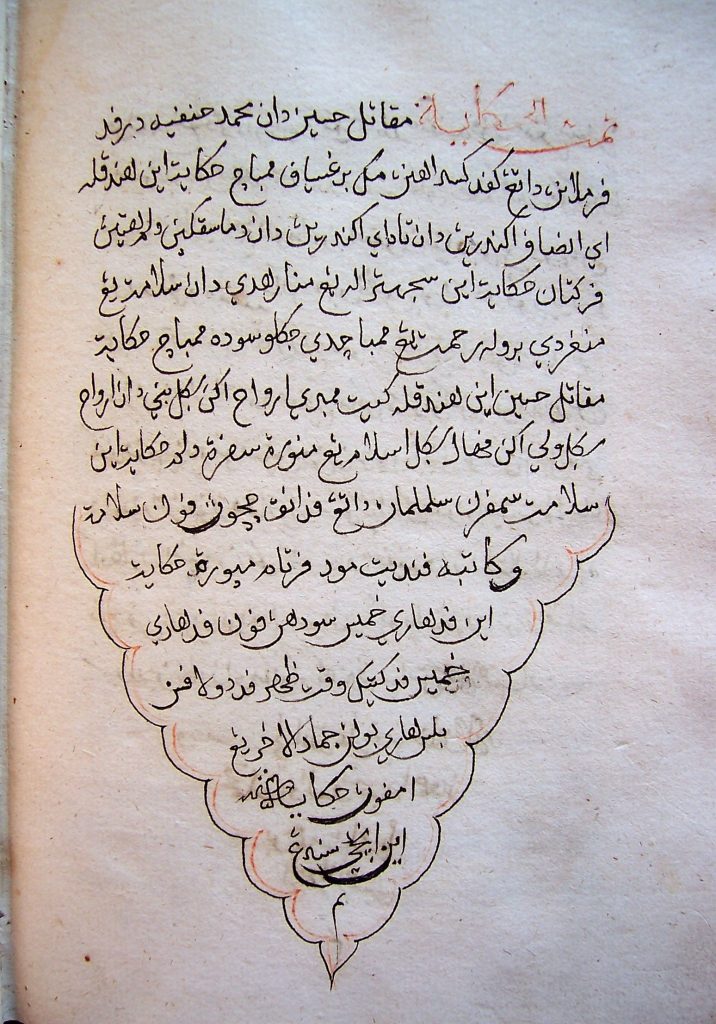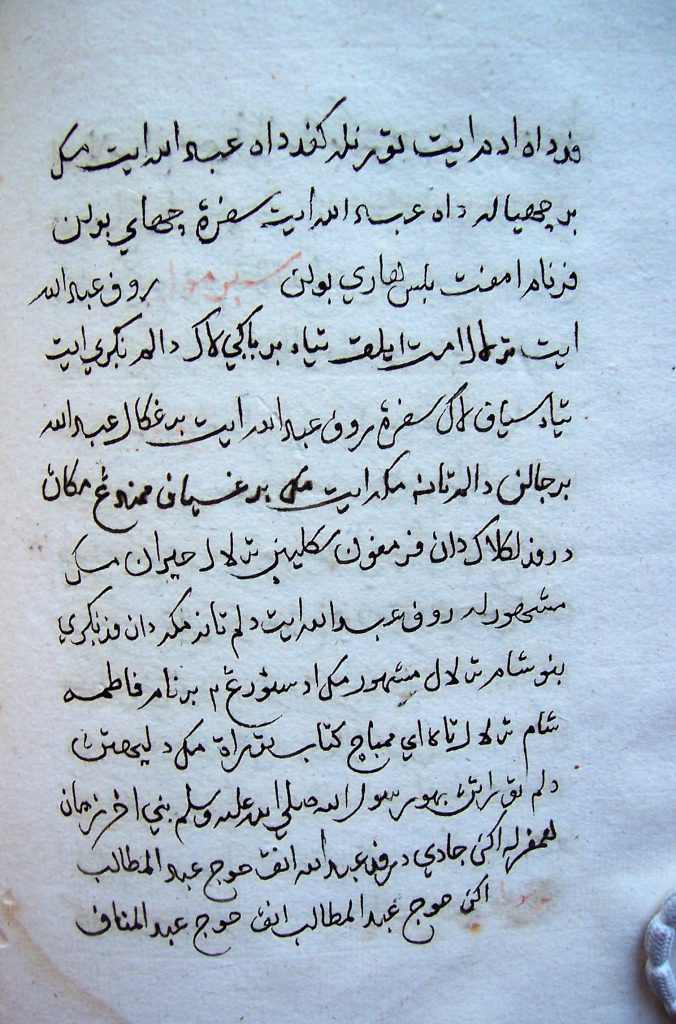
The Blue Hikayat Muhammad Hanafiyyah: A Rare Copy of a Malay Folk Story at Emmanuel College, Cambridge
Note: My thanks go to Dr H. C. Carron, Dr Amy Leahy and Professor Barry Windeatt of Emmanuel College Library, University of Cambridge, for allowing me to examine their Islamic and oriental manuscripts during 2022–2023, for which a handlist will be completed in the near future. The images of the manuscript MS 219 are reproduced by permission of The Master and Fellows of Emmanuel College, Cambridge. I am glad that I was finally able to provide a general overview of this important manuscript. All errors are solely mine.
As I demonstrated previously, the second part of the manuscript Ll.6.5 in Cambridge University Library (CUL) belonging to Thomas Erpenius (d. 1624) is the oldest known copy of the Malay Hikayat Muhmmad Hanafiyyah, dealing with the death of Muhammad’s grandsons Hasan and Husayn and the rise of their half-brother, Muhammad al-Hanafiyyah.[1] This manuscript was copied on oriental paper and bears a Persian couplet ascribed to the Persian poet Ferdowsi (d. 11th century CE), who produced the Shah-namah (the Book of Kings). One folio of Ll.6.5 includes a frame of red cotton thread around Q. 9:97[2] made by a reader to remind the audience about the sensitivity of this Qur’anic verse; interestingly, and based on this highlighted section, both Q. 9:97 and the Persian couplet are not reproduced in almost all post-17th century copies of the Hikayat Muhammad Hanafiyyah.

In view of the inclusion of these elements, I had concluded that Ll.6.5(ii) was highly likely one of the master copies of this text circulating in the Malay-Indonesian world in the 16th century CE. I also pointed out that Ll.6.5(ii) was the main prototype of “MS 3.2.10 [MS 219] of Emmanuel College in Cambridge, due to its similarities and a further number of Persian couplets and quotations”.[3]
Our knowledge about MS 219 (which has 270 folios and measures 18.7 x 14 cm) is limited to a few catalogue descriptions and studies.[4] To revise and carry forward earlier research, I would like to shed light on various unknown or lesser-known aspects of this manuscript.[5]
Emmanuel MS 219, which includes several different treatises, was copied by Pendeta Muda and was in the possession of a female or male lord (Enchi’/انچیٔ)[6] carrying the family name of Sendang/Sandang,[7] clearly from Central Java. The calligraphic interwoven form of (ة) in حکایة (hikayat) in the colophon (see Fig. 2) also proves its Javanese background.[8] In his colophon, the scribe, Pendeta Muda, gives two titles, “Maqatil Husayn” and “Hikayat Muhammad Hanafiyyah”, and then briefly notes its completion date during “the month of Jumada al-Akhir.” The first folio begins with a Latin note in black that it was in the possession of William Mainstone who donated it to Emmanuel College. Mainstone was the author of a ‘Malay Grammar’ in 1682, “who served with the East India Company in Banten, Makassar and Jambi in the 17th century.”[9] According to my knowledge and available data, Emmanuel College’s copy of the Hikayat Muhammad Hanafiyyah is the oldest extant copy of this story produced in Central Java. Another fascinating aspect of the manuscript concerns its blue-coloured paper, of European origin with watermarks[10], one of which was used in a print of 1645,[11] which seems unusual for such an old manuscript written in Southeast Asia. As such, the manuscript can at least be dated from the mid-17th century.

Although the main body of the manuscript (without foliation and pagination) contains the story of Muhammad Hanafiyyah, it includes further Islamic stories. The content can be divided into the following parts:
- Tatkala Rasul Allah Salli Allah Alayh wa-sallam mula jadi, starts with a reference to the name and account of Kadi ‘Umyan al-Din; this part is clearly a very short Malay rendition of the Persian Tawallud-namah or ‘the Birth Tale of the Prophet’ combined with Nur-Namah (‘the Tale of the Light of Muhammad’). This part should be read along with the following treatise indicating prophecies about the birth, prophethood and ascension of Muhammad.
- Kissa Miraj, replete with theological and apologetical phrases and words in Persian demonstrating that it is a direct Malay rendition of the Persian Mi’raj-namah (‘the Tale of Muhammad’s Ascension’). It includes several accounts and stories related to Fatimah of Damascus (Fatimah Sham/Shami), perhaps referring to the medieval Muslim female thinker. See image of Fig. 3 below.
- Hikayat Maqatil Husain (regarding the Killing Story of Husain in Karbala)
- Hikayat Muhammad Hanafiyyah (the Tale of Muhammad Hanafiyyah)
Parts C and D are interconnected; after part (C) ends with the martyrdom of Husain in Karbala and captivity of his ahl al-bayt (‘household’) in the court of Yazid, part (D) begins with the rise of Muhammad Hanafiyyah who wants revenge.

Not only are there a large number of lines in Persian throughout the whole text, but treatises C and D bear further Persianate features which are not seen in all other copies of this story. In addition to the couplets ascribed to Ferdowsi (and references to Q. 9:97), there are three more Persian couplets whose chivalrous themes are significant. That these additional couplets mixed with several Persian accounts (e.g., qeysar-e qeysaran; sarv-e ‘alam, muhr-e nabuwwat, shahrab-e zangi; Khalkhal-e zangi)[12]are not traceable in any other copies demonstrates that MS 219 is the most complete version of the Hikayat Muhammad Hanafiyyah with unique elements, which is also faithful to its original Persian prototype from the 13th/14th century CE, viz., Durr al-Majalis by Sayf Zafar.[13]
Given the importance of this manuscript and its unique features, I have initiated discussions with a number of leading philologists, historians and codicologists of Malay manuscripts. As part of a new project, my conversations with key figures in the field regarding parts A-D will be published alongside a facsimile version of MS 219.
By Dr Majid Daneshgar (Munby Fellow 2022–2023; Associate Professor of Area Studies, Kyoto University, Japan)
[1] Majid Daneshgar, “Secrets of the Erpenius copy of the Killing Story of Husain in Karbala”, Cambridge University Library Special Collection (February 2023): https://specialcollections-blog.lib.cam.ac.uk/?p=24302
[2] “The desert Arabs are the most stubborn of all peoples in their disbelief and hypocrisy.”
[3] Daneshgar, “Secrets of the Erpenius copy of the Killing Story of Husain in Karbala”.
[4] M. Ricklefs, P. Voorhoeve and A. T. Gallop, Indonesian Manuscripts in Great Britain: A Catalogue of Manuscripts in Indonesian Languages in British Public Collections (Jakarta: Ecole française d’Extrême Orient, Perpustakaan Nasional Republik Indonesia [and] Yayasan Pustaka Obor Indonesia, 2014), 111. Brakel, who is widely known because of his book on the Hikayat Muhammad Hanafiyyah, did not pay a lot of attention to the content and structure of this copy and only highlights it as one of the main sources used throughout his PhD project. It should be noted that he had examined the microfilm version of MS 219. L. F. Brakel, The Hikayat Muhammad Hanafiyyah: A Medieval Muslim-Malay Romance (Leiden, Koninklijk Instituut Voor Taal-, Land- en Volkenkunde, 1975); L. F. Brakel, The Story of Muhammad Hanafiyyah (Berlin: Springer, 1981).
[5] My thanks go to Dr. Annabel T. Gallop of the British Library and Professor Peter G. Riddell (SOAS) for reading the first draft of this essay. As soon as I studied the manuscript and obtained some scanned pages, I started my discussions with leading figures in Europe, SE Asia and Australia about the significance of MS 219.
[6] Regarding Ence’, see: Sir Frank Athelstane Swettenham, Vocabulary of the English and Malay Languages, with Notes (Singapore: Government Printing Office, 1881), p. 63.
[7] Surprisingly, Brakel viewed the name “Sendang” from a modern perspective, considered it as an Acehnese name, which does not make sense according to historical archives. Brakel, The Hikayat Muhammad Hanafiyyah, 56. On Sendang/Sandang as part of Central Java see, Biblotheca Indonesica, vol. 1 (1968), p. 424.
[8] After examining many Islamic manuscripts from Java at CUL and Leiden University Library, among others, it came to my attention that this form of interwoven calligraphy was a common pattern in Java. Later, and in the 19th century, some manuscripts from Singapore reproduced the interwoven form ‘ta’.
[9] Annabel Teh Gallop, “Early studies of the Malay language”, Asian and African Studies Blog, the British Library (October 2013): https://blogs.bl.uk/asian-and-african/2013/10/early-studies-of-the-malay-language.html
[10] M. Ricklefs, P. Voorhoeve and A. T. Gallop, Indonesian Manuscripts, 111.
[11] Thanks to Annabel T. Gallop for drawing my attention to this point. Also, see: W. A. Churchill, Watermarks in paper in Holland, England, France, etc. in the XVII and XVIII centuries and their interconnection (Amsterdam: M. Hertzberger, 1935), no. 469, p. 86. Such blue papers were known as “lower quality papers” among the Dutch and English. See, Farouk Yahya & Russell Jones, “Malay manuscripts: a guide to paper and watermarks. The collected works of Russell Jones 1972–2015,” Indonesia and the Malay World 49/144 (2021), 139–394, especially 208.
[12] I have romanized them based on their Persian form, not Malay.
[13] I gave a lecture and published about Durr al-Majalis as the Persian prototype of this Hikayat and other Malay stories in 2017 and 2018: Majid Daneshgar, “New evidence on the origin of the Hikayat Muhammad Hanafiyyah,” Archipel. Études interdisciplinaires sur le monde insulindien 96 (2018): 69–102. My Persian edition, English translation and critical introduction is forthcoming.
